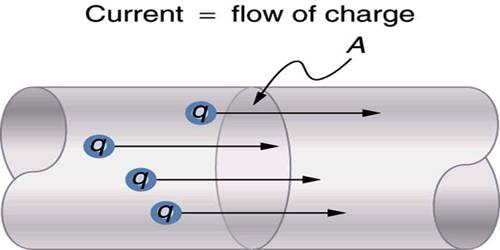
Uluru-Kata Tjuta: A Living Map of Indigenous Land Management
Forget merely gazing at Uluru’s crimson grandeur or Kata Tjuta’s domed majesty. To truly experience Australia’s spiritual heartland, you must understand the deep, living map of indigenous land management that underpins its existence. Uluru-Kata Tjuta National Park is not just a geological wonder; it is a profound testament to millennia of ecological stewardship by the Anangu people, the Traditional Owners, whose ancient practices are not only relevant but vital to the park’s contemporary management. This isn’t about quaint historical practices; it’s about a dynamic, active system of land management that offers crucial lessons for the modern world, making it an unparalleled destination for the discerning, conscious traveler.
The Anangu Connection: Owners, Managers, Teachers
The story of Uluru-Kata Tjuta’s land management begins with the Anangu, specifically the Pitjantjatjara and Yankunytjatjara people, whose connection to this land, known as Aṉangu Tjukurpa, stretches back tens of thousands of years. Tjukurpa is more than just a dreamtime story; it is the foundational law, a complex belief system that dictates everything from social conduct to environmental responsibility. It’s a spiritual, cultural, and ecological blueprint that maps out their relationship with the land, its flora, fauna, and water sources.

In 1985, after decades of advocacy, the Australian government formally handed back the title deeds of Uluru-Kata Tjuta National Park to the Anangu people. This was not a symbolic gesture but a profound act of reconciliation and recognition, immediately followed by the Anangu leasing the land back to Parks Australia for 99 years. This unique arrangement established a joint management model, where the Anangu and Parks Australia work together to protect the natural and cultural values of the park. This co-management is the bedrock of its success, transforming the park from a mere tourist attraction into a dynamic learning landscape.
Decoding the "Maps": Indigenous Land Management in Action
The "indigenous land management maps" at Uluru-Kata Tjuta are not cartographic diagrams drawn on paper, but an intricate, intergenerational knowledge system, passed down through oral tradition, ceremony, and practical application. These maps guide daily decisions, from fire management to water conservation, and are visibly implemented across the park.
1. Fire Management: The Cool Burn Strategy

Perhaps the most striking example of active indigenous land management is the Anangu’s sophisticated use of fire. For millennia, Anangu have practiced "cool burning" – small, controlled fires lit in the cooler months. This stands in stark contrast to Western fire suppression strategies, which often lead to massive, destructive wildfires.
- Fuel Reduction: Cool burns remove dry grasses and undergrowth, creating a mosaic of burnt and unburnt areas. This prevents the build-up of fuel that could feed large, intense bushfires during hotter months.
- Biodiversity Promotion: Different fire regimes encourage diverse plant growth. Some plants thrive after fire, others need specific fire conditions to germinate. This patchwork approach ensures a variety of habitats, supporting a wider range of animal species.
- Hunting and Gathering: Traditionally, cool burns helped create clearings for hunting kangaroos and other animals, and encouraged the growth of specific "bush tucker" (edible plants). Even today, this knowledge informs park management.
- Cultural Significance: Fire is also a powerful tool for cultural renewal and connection to Country. The act of burning is steeped in Tjukurpa, reinforcing the Anangu’s role as custodians.

When you see smoke plumes rising in the distance during a visit, you are likely witnessing this ancient practice in action, a living map being redrawn to ensure the health and resilience of the ecosystem.
2. Water Management: Protecting Sacred Sources
In an arid landscape, water is life, and its management is paramount. The Anangu’s "maps" of water sources are incredibly detailed, identifying permanent waterholes (billabongs), seasonal soaks, and the subtle signs of underground water.

- Sacred Sites: Many waterholes, like Mutitjulu Waterhole at Uluru, are deeply sacred. Tjukurpa dictates how these sites are approached, used, and protected. This often means restricted access for certain ceremonies or times, and a general reverence that prevents overuse or contamination.
- Seasonal Understanding: Anangu knowledge tracks the ebb and flow of water with the seasons and rainfall patterns, informing where to find water and how to conserve it. This knowledge is critical for understanding animal movements and plant growth.
- Sustainable Use: Traditional practices emphasize taking only what is needed, ensuring water sources remain viable for future generations and the diverse wildlife that depend on them. Visitors are reminded of the fragility of these resources, with strict rules against disturbing water sources.
3. Biodiversity and Conservation: Reading the Landscape
The Anangu’s "maps" extend to an encyclopedic understanding of the park’s flora and fauna. This isn’t just identification; it’s a deep knowledge of their life cycles, interdependencies, and uses.
- Tracking and Monitoring: Anangu rangers use traditional tracking skills alongside modern scientific methods to monitor animal populations, identify threats, and manage invasive species. Their ability to read the subtle signs on the land provides invaluable data that Western science alone might miss.
- Bush Tucker and Medicine: The knowledge of edible and medicinal plants is vast, informing not only sustenance but also a deep understanding of plant communities and their health. This traditional knowledge is now being integrated into park rehabilitation programs.
- Holistic Approach: Unlike a Western approach that might focus on a single species, Anangu management considers the entire ecosystem. The health of the land, plants, animals, and people are seen as intrinsically linked, a holistic perspective that is increasingly valued in modern conservation.
4. Cultural Site Protection: Invisible Boundaries, Profound Respect
Uluru and Kata Tjuta are not just rocks; they are living cultural landscapes, imbued with the stories and spiritual power of Tjukurpa. The Anangu "maps" dictate where significant stories occurred, where ceremonies are performed, and where access is restricted.
- Restricted Areas: Certain areas around Uluru and Kata Tjuta are marked as sacred, particularly for men’s or women’s ceremonies. Visitors are respectfully asked not to photograph these areas or even to point at them. These "invisible boundaries" are a direct application of Tjukurpa, protecting the integrity of sacred knowledge.
- The Climb Ban: The closure of the Uluru climb in 2019 was a landmark decision, directly reflecting the Anangu’s deep spiritual connection to Uluru and their wishes as Traditional Owners. For them, Uluru is not a playground but a sacred place, and climbing it is akin to walking on someone’s church or ancestral burial ground. This decision, widely supported by the Anangu, is a powerful example of indigenous land management prioritizing cultural and spiritual values over purely recreational ones.
The Visitor Experience: Navigating the Living Map
For the conscious traveler, Uluru-Kata Tjuta offers a unique opportunity to engage with these living maps. It’s not about passively observing; it’s about active learning and respectful participation.
- Anangu-Led Experiences: Participating in a ranger-guided walk led by an Anangu Traditional Owner is paramount. These walks aren’t just nature tours; they are immersive storytelling sessions where the land itself becomes the narrative. You learn about Tjukurpa, the plants and animals, and the deep connection between them. This is where the "maps" truly come alive, as you are guided through the landscape with ancient wisdom.
- The Cultural Centre: The Uluru-Kata Tjuta Cultural Centre is an essential first stop. It provides context, historical background, and explains the Tjukurpa in an accessible way, preparing visitors to understand and respect the park’s cultural significance. It’s here that the principles of joint management and the importance of traditional knowledge are clearly articulated.
- Respectful Conduct: Adhering to park rules – staying on marked paths, refraining from collecting souvenirs, respecting photography restrictions, and most importantly, not climbing Uluru – is not just about compliance; it’s an act of respect for the Traditional Owners and their land management practices. It acknowledges their sovereignty and their deep spiritual connection. Your behavior directly impacts the integrity of their management.
- Understanding the "Why": The true reward for the traveler lies in moving beyond superficial awe to a deeper understanding of why things are managed the way they are. Why are fires lit? Why are certain areas restricted? Why is the climb closed? The answers lie in the Anangu’s sophisticated, millennia-old land management maps, rooted in Tjukurpa.
Challenges and the Future
Despite its success, Uluru-Kata Tjuta National Park faces ongoing challenges. Climate change poses a threat to the delicate desert ecosystem, potentially altering rainfall patterns and increasing fire risks. Balancing the increasing demands of tourism with the imperative of cultural and environmental protection is a constant negotiation.
However, the co-management model, informed by the Anangu’s living maps of land management, provides a robust framework for addressing these issues. The integration of traditional ecological knowledge with Western science offers a powerful, adaptive strategy. The ongoing involvement of Anangu youth in ranger programs ensures the intergenerational transfer of this vital knowledge, securing the future of both the people and the land.
Why This Matters for Travelers
Visiting Uluru-Kata Tjuta National Park is more than just a tick on a bucket list. It’s an opportunity to witness a profound example of sustainable land management, where ancient wisdom actively informs modern conservation. It challenges preconceived notions of "wilderness" and highlights the critical role of indigenous peoples as custodians of the earth.
As travelers, our choices have an impact. By visiting Uluru-Kata Tjuta with an open mind and a respectful attitude, engaging with the Anangu’s story, and supporting their management practices, we contribute to a model of tourism that empowers indigenous communities and champions holistic environmental stewardship. We learn that the most effective "maps" for navigating our world’s environmental challenges might just be those drawn from the wisdom of those who have lived in harmony with the land for millennia. It’s a journey not just to a place, but into a way of understanding the world.

